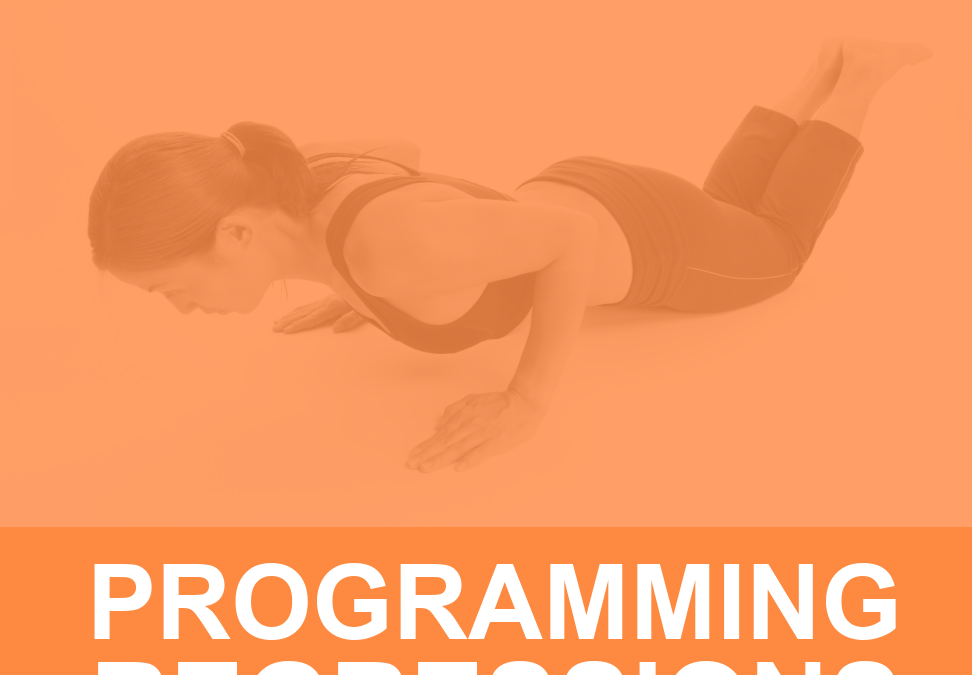I always say a skilled personal trainer is not about being hard or tough but one that meets a client where they are and gradually progress them to achieve a greater level of fitness. Most of the time, especially for clients that are over 40 and or just getting back into working out, making an exercise harder or programmed with small group training in mind would not be a good fit and potentially detrimental. Instead, think about how regressions for each exercise might come into play and when to use them appropriately.
Regressions take an exercise and make it easier. Savvy personal trainers will be able to make the proper adjustments to find just the right level if difficulty for the client in front of them. For any exercise you can regress that’s key to help clients stay safe, they should get just the right degree of stimulus that allows them to train without compensations or limitations.
There may be a bit of trial and error involved, especially with a new client. But if you see a client cannot accomplish an exercise without compensations or undue strain, then it’s time to regress.
Possible Modes of Regression
The following are four different ways to regress most exercises and still get full benefit:
Range of Motion
Clients with limited mobility or who may feel discomfort beyond typical muscle burn will require a reduced range of motion. The exercise that immediately comes to mind is the Goblet Squat. The Goblet Squat is when you hold a dumbbell or Kettlebell in front of your chest, while squatting down to parallel or 90 degree angle and drive back up to starting position. Regardless of the load, the back should be flat, chest up, knees spread out and feet and heels down (no arching or turning of the feet).
For some this simply is not possible yet, so we meet the client with where they are. After observing their form, I would have them squat to a plyo box or bench, to a depth that challenges them but is still attainable. Beef it up with balance pads* if necessary. If it’s too easy, increase squat depth by removing a pad or having the client stand on a short step. If their heels rise during the descent, you may elevate them by placing small weight plates under heels, but bear in mind they may improve ankle mobility with corrective work on the calves and feet.
[sc name=”plyometric” ][/sc]
Load
Changing the load (resistance) is probably the easiest modification to make. I would always caution to start off lighter and increase load versus starting heavy and reducing the load for two reasons: too much weight to handle safely puts the client at a higher risk of injury; from a mental perspective if your client can’t lift a weight, they may feel discouraged and lose self-efficacy
which is antithetical to being an effective personal trainer.
Remember–we want to build people up, not tear them down. Any exercise that uses added load could be the example here. Let’s take chin-ups. Chin-ups are a tremendous exercise, but most of your clients can’t perform one without assistance (unless they’ve already trained to do them). By simply using assistance—either machine, band, or even from you as the trainer– clients can gain strength and increase reps on the chin-up by working within the rep range they are capable of. Over time with good programming, recovery, and determination your client will need less help but it all starts with making it right for them right now.
Same goes for something like a push-up. Expecting a new-to-exercise client to properly perform bodyweight push-ups is unrealistic. You an regress by having them start on their knees and firming up core strength and control, or even standing, hands against a wall, if strength is particularly lacking.
Movement
When an exercise has multiple steps to it, the execution may become too challenging, especially for new-to-exercise clients. Keep it simple and add layers of movement as the client becomes proficient within the exercise. While lateral lunges might be good for a majority of clients, some may need something with less difficulty, such as the lateral squat. Instead of taking a lunge step out to the side, (which is difficult for many people to coordinate) and step back to start (which requires power from the lunging leg that your client may not have mastered) the client can still learn to step laterally into a squat. This would be a progression from an air squat but a regression from a lateral lunge. Now the client can focus on doing the exercise correctly and not get confused with a step that may throw off the mechanics of the intended exercise.
Points of Contact / Support
An exercise becomes significantly easier when the limbs provide more points of contact or support. If you programmed single-leg Romanian deadlifts, it could spell disaster for many clients, especially right out the gate. Instead, opt for Kickstand Romanian Deadlifts. When you do Kickstand Romanian Deadlifts, you keep both feet in contact with floor which allows for greater stability and balance.
Be a Great Personal Trainer
Anyone can make an exercise harder but challenging a client beyond their abilities will never make you a great trainer. Knowing intuitively how to regress your clients and work them within an appropriate level, will enable them to build on ability, strength, and steadily progress. You may risk your clients getting hurt or not doing an exercise correctly if you fail to recognize when regression is necessary. Learn how to do every exercise, know how to make it more challenging, but also learn how to make each one easier by mastering regressions.
*This article contains affiliate links.


